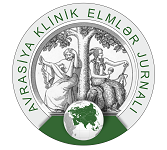
Pathologic response after neoadjuvant chemotherapy predicts locoregional control in patients with triple negative breast cancer
Annotasiya
Abstract PurposeOur goal was to determine the impact of pathologic response after neoadjuvant chemotherapy in triple negative breast cancer (TNBC) on the subsequent risk of locoregional recurrence (LRR) and disease-free survival (DFS) in the setting of adjuvant radiation therapy.
Methods and materialsThis was an institutional review board–approved retrospective chart review of patients with clinical stage I-III breast cancer treated with neoadjuvant chemotherapy, local surgery (breast conservation or mastectomy), and adjuvant radiation therapy between 1997 and 2015. Medical records were reviewed for clinical stage, tumor grade and subtype, neoadjuvant chemotherapy regimen, type of surgery, pathologic stage, use of radiation therapy, date and location of recurrence, and date of death. Molecular subtypes were defined using immunohistochemistry and histologic grade. ypT0 and ypN0 were defined as no residual invasive disease in breast or nodes, respectively. LRR was defined as any failure within the breast, chest wall, or regional lymph nodes. Statistical analysis was performed; LRR and DFS rates over 30 months were determined from Kaplan-Meier plots.
ResultsNinety-four patients with TNBC were analyzed, of whom 72 received radiation therapy. This subgroup was isolated for further investigation. Median follow-up was 32.5 months in this group. The pathologic complete response (pCR) rate was 36%, and presence or absence of disease in breast and/or nodes was significantly predictive of LRR. In TNBC patients who received radiation therapy, 30-month LRR was 22% in 41 patients with ypT+ versus 0% in 31 patients with ypT0 (P = .003), 23% in 31 patients with ypN+ versus 5% in 41 patients with ypN0 (P = .016), and 20% in 46 patients with residual disease in breast or nodes versus 0% in 26 patients with pCR (P = .015). The difference in the rate of LRR between those who underwent lumpectomy versus mastectomy did not reach significance (8% vs 17%, respectively). Furthermore, patients with residual disease had a higher rate of DFS events (hazard ratio, 3.58; 95% confidence interval, 1.37-9.41; P = .006). The difference in DFS was not significantly associated with the type of surgery received.
ConclusionsPatients with TNBC treated with neoadjuvant chemotherapy who have residual disease in the breast or lymph nodes at the time of surgery have significantly higher rates of locoregional failure and lower DFS compared with those with a pCR despite the use of adjuvant radiation therapy. Strategies to intensify therapy for patients with residual disease warrant further investigation.
